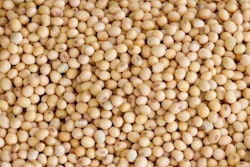
“How do we take 950 million to 1.1 billion acres of damaged and degraded agricultural land and convert them into something that can actually produce something? With permaculture,” said Christopher Nesbitt, speaking at the 2018 Midwest Organic and Sustainable Education Service (MOSES) Organic Farming Conference on February 24 in La Crosse, Wisconsin. Nesbitt manages Maya Mountain Research Farm in San Pedro Columbia, Belize, which promotes sustainable agriculture, appropriate technology and food security using permaculture principles and applied biodiversity.
What is permaculture?
Permaculture is a system of agricultural and social design principles centered around simulating or directly utilizing the patterns and features observed in natural ecosystems. The design principles and strategies, which can be applicable to a wide range of domains, seek to minimize waste, human labor and energy input. As a result, permaculture can help farmers produce more food using fewer resources. In practice, permaculture farms are organic, low-input and biodiverse.
Agroforestry is an integrated approach of permaculture, which uses the interactive benefits from combining trees and shrubs with crops or livestock, according to the U.S. Department of Agriculture (USDA) National Agroforestry Center. It combines agricultural and forestry technologies to create more diverse, productive, profitable, healthy and sustainable land-use systems
Energy returned on energy invested
Farmers and producers are chiefly concerned about how energy efficiency can be improved in terms of generating higher yields relative to the amount of energy input. Permaculture, which works with nature rather than against it, meets and exceeds these goals as the system provides for its own energy needs, says Nesbitt. “It’s all about thinking about how we can manage our energy and nutrient streams so that we get more successional harvests.”
Maya Mountain Research Farm was founded in 1988 when Nesbitt bought an abandoned and damaged citrus and cattle farm. Years of cattle raising left the farm with acres of heavily compressed soils and the acres of citrus at the end of their productive life span. The region where Nesbitt farms also faces the issue of a population that doubles every 25 years. As a result, the area has been deforested, crop rotation cycles are not being observed and people have begun to make bad long-term decisions for short-term need. These decisions compromise the land for 30 to 40 years.
Over the last few decades, after applying the principles of permaculture, the Maya Mountain Research Farm has been transformed into a productive food forest with over 500 species of plants. In addition to the large agroforestry system, the farm raises pigs, chickens and ducks with a plan to raise sheep and goats and a developing aquaponics system. The farm also conducts training in permaculture, agroforestry and renewable energy.
How can permaculture help mitigate climate change?
Loss of biological diversity in agriculture is a growing global problem, said Nesbitt. As fewer varieties of species are grown along with the dependence on costly imported agrochemicals, fertilizers and seeds, the genetic heritage of agriculture is being lost.
Currently, farms are being criticized for producing too many greenhouse gases. Incorporating even some permaculture on any sized farm can help mitigate climate change. Experimenting with permaculture techniques can improve efficacy and sustain limited farm resources. According to Nesbitt, “That’s the way of the future; we have to get into tree crops to draw down carbon to mitigate climate change.”
Even though Nesbitt lives in a tropical climate, he says permaculture would work for a farm in any climate. “The jungle that we created is providing food, fuel, fiber, timber, fodder and marketable crops, while at the same time it’s providing ecosystem services like carbon sequestration, soil and water retention and habitat creation,” said Nesbitt. “We want something that functions like a primary habitat but is also meeting our needs.”
“Care of earth and care of people is paramount,” Nesbitt concluded.

















